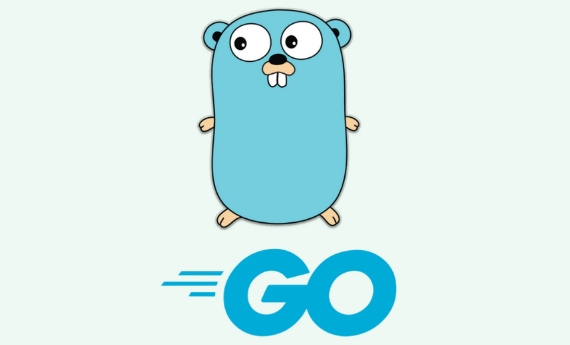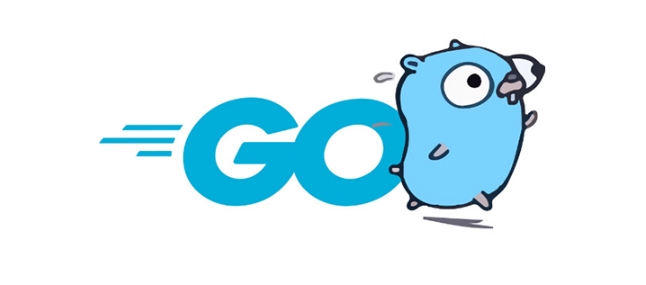In Go, embedding allows structs to promote fields and methods from one type to another through composition, not classical inheritance; 1. When a type is embedded anonymously, its fields and methods are directly accessible on the outer struct; 2. Code reuse is achieved without inheritance, as seen when an Employee embeds Person and accesses Name and Speak() directly; 3. Method promotion enables the outer type to use embedded methods as if they were its own; 4. Interface satisfaction is inherited, allowing the outer type to satisfy interfaces implemented by the embedded type; 5. Explicit access to the embedded type is still possible using the type name, such as emp.Person.Name; 6. Conflicting methods or fields in the outer struct take precedence over those in the embedded type; 7. Embedding supports any named type or pointer, such as *User in Admin; 8. Anonymous struct fields must be types, not type aliases unless they have distinct underlying types; 9. Example with Server embedding Logger shows how functionality like Log() can be reused cleanly; thus, embedding promotes reusable, maintainable code through composition with promotion, a core principle of idiomatic Go design.

In Go, embedding in structs is a way to include one struct (or any type) inside another to promote code reuse and composition. It’s Go’s version of “inheritance,” but not in the classical OOP sense — instead of saying "a Dog is an Animal," Go encourages "a Dog has animal-like behaviors" by embedding.

How Struct Embedding Works
When you embed a type directly in a struct (without giving it a field name), Go automatically promotes the fields and methods of the embedded type to the outer struct.
type Person struct {
Name string
Age int
}
func (p Person) Speak() {
fmt.Printf("Hi, I'm %s.\n", p.Name)
}
// Embedding Person in Employee
type Employee struct {
Person // Anonymous (embedded) field
Job string
Salary float64
}Now, an Employee gets access to all fields and methods of Person directly:

emp := Employee{
Person: Person{Name: "Alice", Age: 30},
Job: "Engineer",
Salary: 80000,
}
fmt.Println(emp.Name) // Access field directly
emp.Speak() // Call method directlyThis feels like inheritance, but under the hood, Go handles it through composition.
Key Benefits of Embedding
- Code Reuse: Avoid rewriting common fields/methods.
- Method Promotion: Methods on the embedded type are available on the outer type.
- Interface Satisfaction: If the embedded type satisfies an interface, the outer type may too.
- Cleaner Design: Encourages composition over inheritance.
Important Details
You can still access the embedded type explicitly:

fmt.Println(emp.Person.Name)
If there are naming conflicts (e.g., both outer and embedded struct have a method), the outer one takes precedence.
You can embed not just structs, but any named type or pointer to a type:
type Admin struct { *User Permissions []string }Unnamed (anonymous) struct fields must be types, not type aliases unless they’re distinct underlying types.
Example: Building Layers with Embedding
type Logger struct {
Prefix string
}
func (l Logger) Log(msg string) {
fmt.Println(l.Prefix ": " msg)
}
type Server struct {
Logger
Port int
}
server := Server{Port: 8080}
server.Prefix = "HTTP"
server.Log("Server starting...")Here, Server inherits logging capability without duplicating code.
Basically, embedding in Go lets you compose types naturally, promoting reusable, clean, and maintainable code. It’s not inheritance — it’s composition with promotion, and it’s a core part of idiomatic Go design.
The above is the detailed content of What is embedding in Go structs?. For more information, please follow other related articles on the PHP Chinese website!

Hot AI Tools

Undress AI Tool
Undress images for free

Undresser.AI Undress
AI-powered app for creating realistic nude photos

AI Clothes Remover
Online AI tool for removing clothes from photos.

Clothoff.io
AI clothes remover

Video Face Swap
Swap faces in any video effortlessly with our completely free AI face swap tool!

Hot Article

Hot Tools

Notepad++7.3.1
Easy-to-use and free code editor

SublimeText3 Chinese version
Chinese version, very easy to use

Zend Studio 13.0.1
Powerful PHP integrated development environment

Dreamweaver CS6
Visual web development tools

SublimeText3 Mac version
God-level code editing software (SublimeText3)

Hot Topics
 Understanding the Performance Differences Between Golang and Python for Web APIs
Jul 03, 2025 am 02:40 AM
Understanding the Performance Differences Between Golang and Python for Web APIs
Jul 03, 2025 am 02:40 AM
Golangofferssuperiorperformance,nativeconcurrencyviagoroutines,andefficientresourceusage,makingitidealforhigh-traffic,low-latencyAPIs;2.Python,whileslowerduetointerpretationandtheGIL,provideseasierdevelopment,arichecosystem,andisbettersuitedforI/O-bo
 Is golang frontend or backend
Jul 08, 2025 am 01:44 AM
Is golang frontend or backend
Jul 08, 2025 am 01:44 AM
Golang is mainly used for back-end development, but it can also play an indirect role in the front-end field. Its design goals focus on high-performance, concurrent processing and system-level programming, and are suitable for building back-end applications such as API servers, microservices, distributed systems, database operations and CLI tools. Although Golang is not the mainstream language for web front-end, it can be compiled into JavaScript through GopherJS, run on WebAssembly through TinyGo, or generate HTML pages with a template engine to participate in front-end development. However, modern front-end development still needs to rely on JavaScript/TypeScript and its ecosystem. Therefore, Golang is more suitable for the technology stack selection with high-performance backend as the core.
 How to build a GraphQL API in golang
Jul 08, 2025 am 01:03 AM
How to build a GraphQL API in golang
Jul 08, 2025 am 01:03 AM
To build a GraphQLAPI in Go, it is recommended to use the gqlgen library to improve development efficiency. 1. First select the appropriate library, such as gqlgen, which supports automatic code generation based on schema; 2. Then define GraphQLschema, describe the API structure and query portal, such as defining Post types and query methods; 3. Then initialize the project and generate basic code to implement business logic in resolver; 4. Finally, connect GraphQLhandler to HTTPserver and test the API through the built-in Playground. Notes include field naming specifications, error handling, performance optimization and security settings to ensure project maintenance
 How to install Go
Jul 09, 2025 am 02:37 AM
How to install Go
Jul 09, 2025 am 02:37 AM
The key to installing Go is to select the correct version, configure environment variables, and verify the installation. 1. Go to the official website to download the installation package of the corresponding system. Windows uses .msi files, macOS uses .pkg files, Linux uses .tar.gz files and unzip them to /usr/local directory; 2. Configure environment variables, edit ~/.bashrc or ~/.zshrc in Linux/macOS to add PATH and GOPATH, and Windows set PATH to Go in the system properties; 3. Use the government command to verify the installation, and run the test program hello.go to confirm that the compilation and execution are normal. PATH settings and loops throughout the process
 Resource Consumption (CPU/Memory) Benchmarks for Typical Golang vs Python Web Services
Jul 03, 2025 am 02:38 AM
Resource Consumption (CPU/Memory) Benchmarks for Typical Golang vs Python Web Services
Jul 03, 2025 am 02:38 AM
Golang usually consumes less CPU and memory than Python when building web services. 1. Golang's goroutine model is efficient in scheduling, has strong concurrent request processing capabilities, and has lower CPU usage; 2. Go is compiled into native code, does not rely on virtual machines during runtime, and has smaller memory usage; 3. Python has greater CPU and memory overhead in concurrent scenarios due to GIL and interpretation execution mechanism; 4. Although Python has high development efficiency and rich ecosystem, it consumes a high resource, which is suitable for scenarios with low concurrency requirements.
 Go sync.WaitGroup example
Jul 09, 2025 am 01:48 AM
Go sync.WaitGroup example
Jul 09, 2025 am 01:48 AM
sync.WaitGroup is used to wait for a group of goroutines to complete the task. Its core is to work together through three methods: Add, Done, and Wait. 1.Add(n) Set the number of goroutines to wait; 2.Done() is called at the end of each goroutine, and the count is reduced by one; 3.Wait() blocks the main coroutine until all tasks are completed. When using it, please note: Add should be called outside the goroutine, avoid duplicate Wait, and be sure to ensure that Don is called. It is recommended to use it with defer. It is common in concurrent crawling of web pages, batch data processing and other scenarios, and can effectively control the concurrency process.
 Go embed package tutorial
Jul 09, 2025 am 02:46 AM
Go embed package tutorial
Jul 09, 2025 am 02:46 AM
Using Go's embed package can easily embed static resources into binary, suitable for web services to package HTML, CSS, pictures and other files. 1. Declare the embedded resource to add //go:embed comment before the variable, such as embedding a single file hello.txt; 2. It can be embedded in the entire directory such as static/*, and realize multi-file packaging through embed.FS; 3. It is recommended to switch the disk loading mode through buildtag or environment variables to improve efficiency; 4. Pay attention to path accuracy, file size limitations and read-only characteristics of embedded resources. Rational use of embed can simplify deployment and optimize project structure.
 Evaluating Code Readability and Maintainability: Golang vs Python Perspectives
Jul 03, 2025 am 02:40 AM
Evaluating Code Readability and Maintainability: Golang vs Python Perspectives
Jul 03, 2025 am 02:40 AM
WhenchoosingbetweenGolangandPythonforcodereadabilityandmaintainability,thedecisionhingesonteampriorities.1.Golangoffersstrictconsistencywithminimal,opinionatedsyntaxandbuilt-intoolinglikegofmt,ensuringuniformcodestyleandearlyerrordetection.2.Pythonpr







